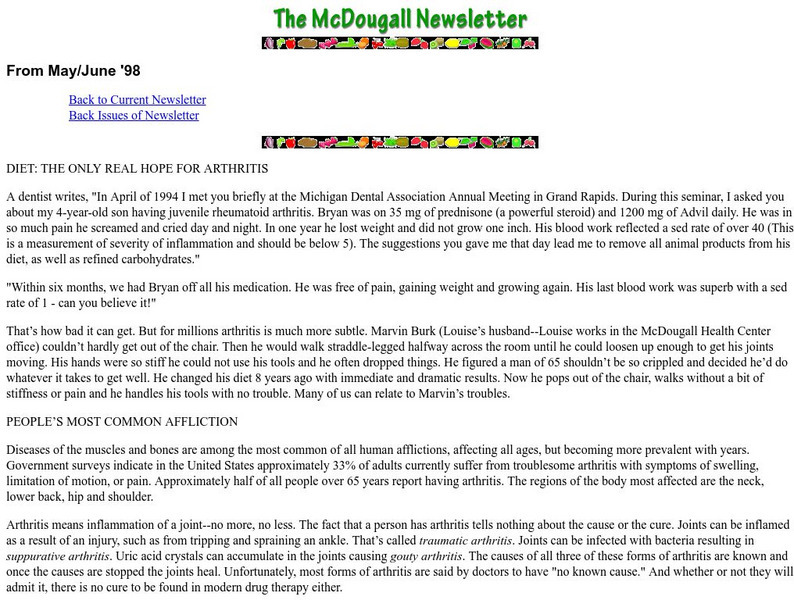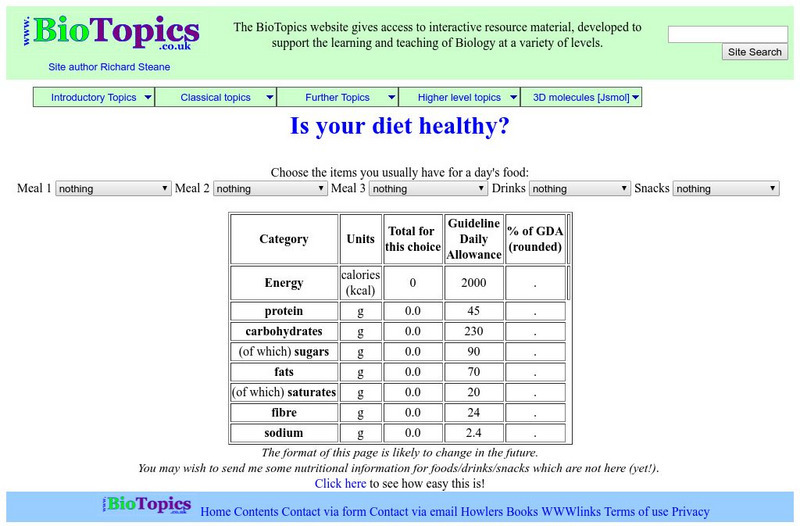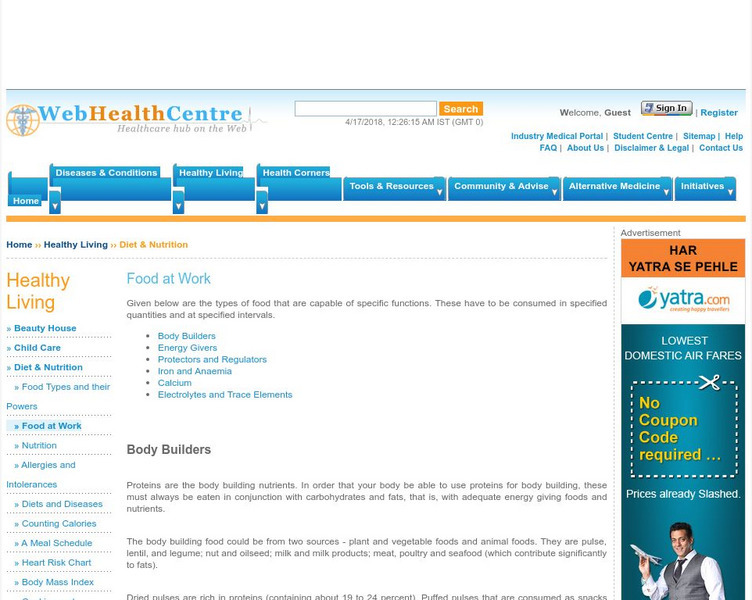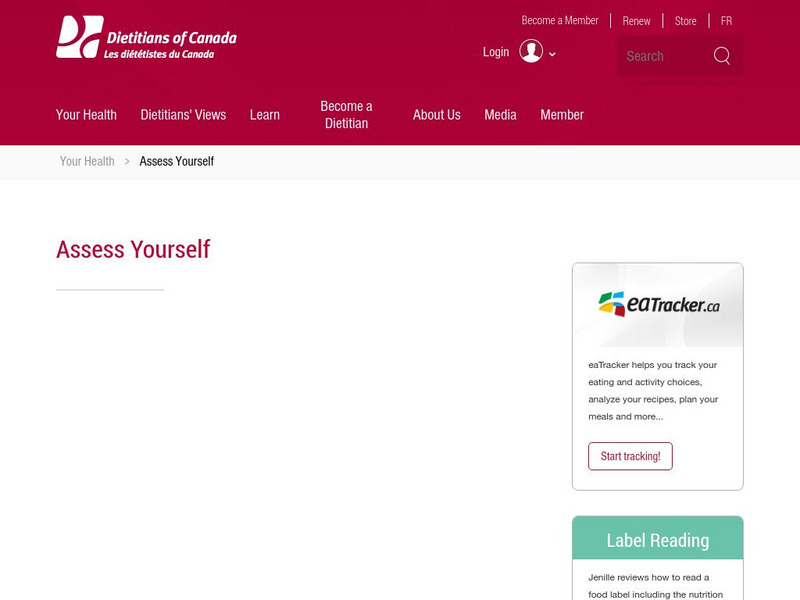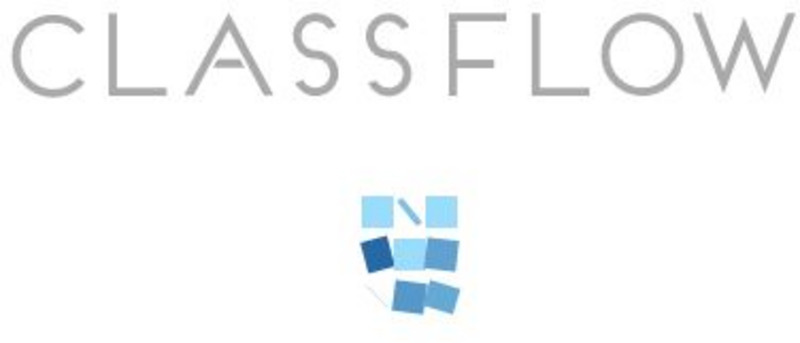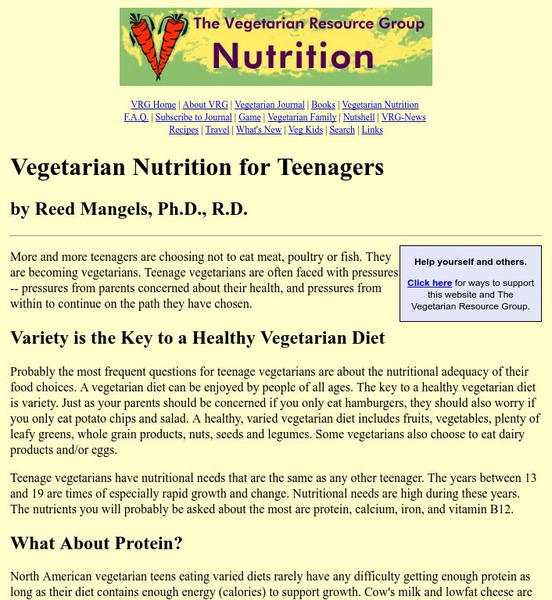Hi, what do you want to do?
Curated OER
Cancer
Students study cancer and possible preventative measures. In this cancer lesson students study the claims on food labels and ways to lower your risk of cancer.
Curated OER
Picture Perfect Pyramid
Students investigate the concept of the food pyramid. The lesson includes background information for the teacher to lecture students about the food pyramid. They construct a model of the pyramid using cereal boxes. The projects could...
Curated OER
Reading Food Labels
Young nutritionists plan nutritional meals by using the USDA's Food Guide Pyramid. Before constructing their meal plans, they take a close look a food labels and learn how to decipher them. In today's world of obese and unfit children,...
Curated OER
It's Sugar Time!
Fifth graders review the Food Pyramid. They examine several breakfast cereal labels and determine how much sugar is in each. They discuss these amounts and whether or not they are surprised by the results. They discuss the amount of...
Curated OER
They Don't Just Eat Grass
Students consider the USDA daily recommendations to create a "feed" product for middle schoolers. For this Health lesson, students learn about the ingredients in feed that is fed to livestock and apply the method to creating feed rations...
Curated OER
Integrating Biology: The Elements in Your Body
In this body elements instructional activity, students read about the chemical make-up of the human body and answer questions about the elements.
Curated OER
Fat - A Concentrated Energy Source
The role of fat as a nutrient that provides a source of concentrated energy and is also necessary for the body to utilize other nutrients, namely some important vitamins.
Curated OER
Food Labels
Students study nutrition and the facts about food labels. In this investigative lesson plan students examine food labels and the health facts and serving sizes.
Curated OER
Hunger and Malnutrition
Learners recognize that our bodies cannot function without certain essential foods. In this hunger and malnutrition lesson, students become familiar with the problems associated with malnutrition such as medical problems, problems...
Curated OER
Hatching Chicks to Agriculture - Where does the feed come from?
Second graders examine the types of grain that goes into feed for chickens. They study other grain crops grown in Kansas and the foods that are made from them.
Curated OER
It's Sugar Time!
Fifth graders examine how good health depends upon many things, including heredity, lifestyle, personality traits, mental health, attitudes, and the environment.
Curated OER
Primary Resources
For this teacher website, teachers have access to various worksheets and lesson plans at no cost. Teachers can select from all subject areas for lesson plans, activities, and available resources.
Curated OER
Food Types
In this food worksheet, students fill in the blanks, write nutrients, answer true or false questions, and answer short answer questions about food. Students complete 25 questions.
Curated OER
Breaking News English: Red Meat Increases Risk of Cancer
In this English activity, students read "Red Meat Increases Risk of Cancer," and then respond to 1 essay, 47 fill in the blank, 7 short answer, 20 matching, and 10 true or false questions about the selection.
Other
Diet: The Only Real Hope for Arthritis
In addition to discussing the use of a vegan diet to lower the risk of arthritis, this article also talks about diet as a means of preventing other diseases and disorders.
Bio Topics
Bio Topics: Is Your Diet Healthy?
A nutrition calculator exploring student's dietary choices by finding their total intake of calories, proteins, carbohydrates, fats, sugars, sodium, and fiber throughout the day.
ClassFlow
Class Flow: Healthy Eating Activity 3: Composite Dishes
[Free Registration/Login Required] This flipchart supports lessons from the Food - a fact of life website. Pupils will be able to identify a healthy meal working out what are the key ingredients for the meals presented.
Other
Kids' World Nutrition Information: Understanding Food Labels
In order to plan a healthy diet, students must know how to read a food label. Food labels show that a food has a little or a lot of certain nutrients. Look on the side of a product to find the Nutrition Facts title, which is fully...
Other
Web Health Centre: Food at Work
Read about the roles of protein, carbohydrates, fats, vitamins, and minerals. Learn what kinds of foods are "Body builders," "Energy givers," and "Protectors," and tailor your diet so that you are getting the nutrients you need to...
Other
Dieticians of Canada: Assess Yourself
Learn about your diet, BMI, and more with this resource from the Dieticians of Canada.
ClassFlow
Class Flow: Healthy Eating Activity 4: Energy
[Free Registration/Login Required] This flipchart supports lessons from the 'Food - a fact of life' website. Pupils will be able to understand why their bodies need energy, how much energy is in certain food types and who needs more...
BBC
Bbc: Gcse Bitesize: Animal Organization Digestion
The major nutrients required for a healthy diet are carbohydrates, proteins, and lipids. The digestive system breaks down large molecules of food, which are then absorbed into the bloodstream. After reading, try the quiz.
Other
Vegetarian Nutrition for Teenagers
This is a very brief article, which discusses ways in which teenagers can eat a healthy vegetarian diet. Here, read tips that will help vegetarians get the protein and nutrition they need to stay healthy.
Curated OER
Kids Health: Figuring Out Fat and Calories
Most people know that fats and calories are connected to our weight, but what is their correlation? This article analyzes their relationship and how an understanding of these items can benefit your body. Links to related articles are...



















